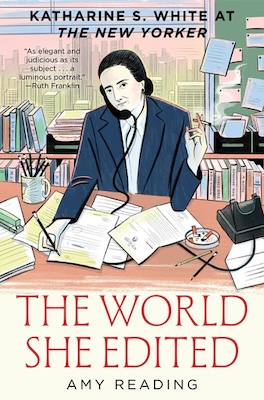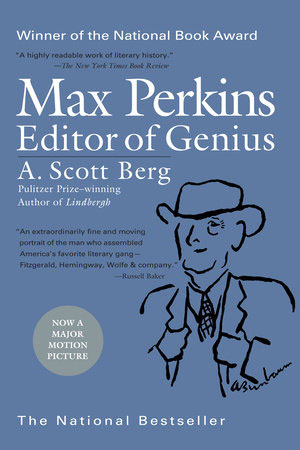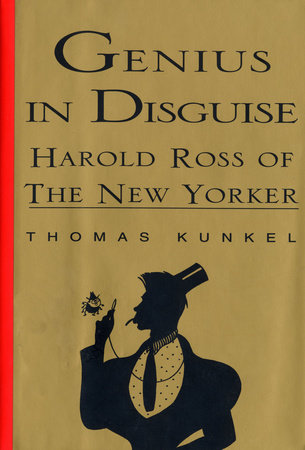Do you scrutinize the acknowledgements pages of the books you love? Do you peer between the lines to build a story in your mind of how those books were made? We’ve demolished the myth of the lone romantic genius madly scribbling in a garret until he is discovered and published to startling acclaim, but a new understanding hasn’t fully taken its place. Writers are often loath to talk about money and slow to credit the role of institutions in their artistic career.
Enter the editors. To get a full sense of how very social the act of publishing is, we need to look at the work of the editors who acquire manuscripts and sculpt them into their final shape. We might define an editor as a superb reader who has discovered a way to supercharge her reading, to make it useful in the service of the work. When I was researching my biography of Katharine S. White, the invisible hand behind The New Yorker from its founding in 1925 to her retirement in 1961, I was astonished to see how much else she did for her writers. She advanced money to Vladimir Nabokov before he published a single word with her. She introduced Jean Stafford to the man who became her third husband, reporter A.J. Liebling. She talked an alarming number of women writers through their divorces and breakdowns and helped them back to their typewriters. The letters between White and her authors testify, again and again, to one salient truth: the art of writing is truly only possible when you know there is a receptive reader on the other end of line, calling out your best work. How moving this is! Stories of sensitive editing show that reading can be an act of care, and penciling up a manuscript can be generative.
I once heard a literary biographer anxiously muse that if all our biographies of writers vanished from our shelves, we’d be no poorer, because the revelation of a writer’s life doesn’t truly impact our interpretation of that writer’s work. Maybe, maybe not. But the work of a literary biography is to show how the writing life is possible—thereby making it possible for today’s readers to grow into tomorrow’s writers. Herewith, eight nonfiction books that tell stories of the behind-the-scenes relationships that have resulted in some of our most beloved books and magazines. May the reading of them open doors to future work.
The Lady with the Borzoi: Blanche Knopf, Literary Tastemaker Extraordinaire by Laura Claridge
Women have been editors since the founding of the American republic. Literature is one corner of the cultural landscape where women have been permitted to exercise their authority. Blanche Knopf was not, therefore, the first woman to hold power in a publishing firm, but for a long time her important work was shadowed by her husband and cofounder Alfred. He betrayed an agreement they made before they married by giving the house only his name when they founded it in 1915.
Laura Claridge’s biography gives a well-rounded portrait of Knopf, who was that rare creature: both a bookworm and a bon vivant. She could spot talent and also throw them a glittering dinner party. Even a partial list of authors she brought into print for American readers is jaw-dropping: Langston Hughes and Nella Larsen, Willa Cather and Elizabeth Bowen, Dashiell Hammett and Raymond Chandler, Simone de Beauvoir and Albert Camus. Her marriage to Alfred was acrimonious and her affairs and her adventurous overseas scouting trips turned some people against her, but Claridge recognizes that Knopf’s autonomy is what allowed her to excel at her job. She was a woman out of sync with her time who helped to bring about ours.
The Editor: How Publishing Legend Judith Jones Shaped Culture in America by Sara B. Franklin
Judith Jones was the first woman editor that Blanche Knopf hired, but not until 1957, and only after Jones had notched a significant victory over Knopf by publishing The Diary of Anne Frank with Doubleday. Jones learned how to manage her imperious boss, and though the two never bonded as the only women in the room, Jones was eventually given significant leeway to pursue her own editorial agenda. She worked at Knopf for over fifty years.
Jones understood her femininity in a different way that Knopf. She made an intellectual life out of women’s pursuits. Most famously, she learned to cook during a youthful year abroad in Paris and was therefore the perfect person to help shape Julia Child’s monumental Mastering the Art of French Cooking, a book which launched Child’s career but also Jones’ career as a cookbook editor. She went on to publish books by the finest chefs and food writers: Edna Lewis, Marcella Hazan, Madhur Jaffrey, M.F.K. Fisher, James Beard. Franklin’s sensitive and affectionate book—she knew Jones at the end of her life and cooked with her in Jones’s Upper East Side kitchen and Vermont country house—shows the interplay between an editor’s life and the books she was receptive to. Franklin writes, “Judith’s books embody the cultural tensions of her times, illuminating the friction between women’s private and public lives, and explore both the expectations foisted on them and their desires for themselves.” The Editor perfectly conveys the pleasure, intellectual excitement, and cultural importance of this job. Franklin says that for Jones to spend her life editing “is an act of devotion. Editing is more vocation than job.”
Dear Genius: The Letters of Ursula Nordstrom collected and edited by Leonard S. Marcus
Notice how often the word “genius” crops up in this list. For Ursula Nordstrom, the word applied not to herself but to her authors; she used it in so many of her lively, bolstering letters to the likes of Louise Fitzhugh, Margaret Wise Brown, and E.B. White. Oh how I would love to receive a letter from Nordstrom. Incredibly, she made it a policy never to turn away an unestablished writer or artist who came to her office with their portfolio. She was the definition of fair in her judgment and wildly enthusiastic when the judgment was in favor.
Nordstrom was director Harper’s Department of Books for Boys and Girls from 1940 to 1973, part of the second generation of women to head children’s book departments at major publishers, but she reinvented the role. Nordstrom cut through the saccharine sentimentalism of her forebears and published, in her own words, “good books for bad children”—books that veered toward the edgy and even transgressive. Think of that chubby little penis in Maurice Sendak’s In the Night Kitchen. “I can assure you that this will be a work of genius. I can assure you that it will turn out well,” she wrote to Sendak when he doubted its inclusion, and then she went to war when librarians began putting a diaper on the boy with white paint.
A “high-strung, voluble, tartly witty woman,” Nordstrom was known as Ursula Maelstrom and Ursa Major, but she was beloved just the same. The daughter of two actors, she created her own persona—a lion who roared, but who also lived quietly with her long-time companion, Mary Griffith—and understood how much writers too needed a persona. This rich and lively collection of letters gives the reader so much delight in the very unchildlike personas behind now-canonical children’s books. Think of Shel Silverstein, who was writing for Playboy when he published The Giving Tree with Nordstrom. Watch as these fallible adults collude on the books that shaped your very childhood.
Furious Hours: Murder, Fraud, and the Last Trial of Harper Lee by Casey Cep
Sure, there’s are grisly murders and an unbelievably corrupt acquittal in this book, the stuff of cinema, but Furious Hours also contains a heartbreaking story about writing, not writing, and editing.
In 1978, eighteen years after Tay Hohoff, the lone female editor at Lippincott, had published Harper Lee’s To Kill a Mockingbird and nineteen years after helping her friend Truman Capote research In Cold Blood, Lee began researching her own true crime novel, The Reverend, about the Alabama serial killer Reverend Willie Maxwell. She sat on the benches at Maxwell’s trial and spent more than a year researching the case. Cep portrays how Hohoff had gained Lee’s trust by working with her over several years to revise the original manuscript of Mockingbird, turning it into something quite different (as would be seen in 2015 when the original was published as Go Set a Watchman). Hohoff desperately wanted a second book from Lee but also guarded her against writing something commercial merely to capitalize on her fame. Hohoff died in her sleep in 1974, which devastated Lee, and when she began to think of Maxwell’s crime as her next book, she had no one to receive it. With astonishing detail, Cep portrays the not-writing that ensued, the gaping holes in Maxwell’s story that Lee would try to bridge in an unchanging routine of writing in longhand and typing the words up each night, an average of a page a day—a routine that was flooded with alcohol. No editor ever wrote Lee letters about her genius or penciled notes in the margins of her pages. The manuscript never appeared.
Max Perkins: Editor of Genius by A. Scott Berg
If there is a mythology of the editor, it begins here, with Berg’s 1978 portrayal of Scribners editor Maxwell Perkins, improbably turned into a movie starring Colin Firth in 2016. The editor is a nondescript man in plain gray suits who shuns the spotlight, but who works heroically behind the scenes to craft masterpieces out of messy, scribbled pages. Perkins was known as the most influential person in publishing who nobody knew. He wanted to keep it that way; when The New Yorker published a profile of him in 1944, Perkins consulted a lawyer about having it suppressed. It is perhaps because of him that editors ever since have largely defined their jobs as purposefully invisible.
Perkins tailored his approach to each author. To Nancy Hale, he counseled sustained periods of not writing when she had trouble with the blank page. “In fact I would be much more concerned if you did not have to go through periods of despair and anxiety and dissatisfaction,” he wrote to her. “I think the best ones truly do.” To F. Scott Fitzgerald, he gave a sensitive reader response to his first novel, describing his reactions to each part of the manuscript and noting when something wasn’t clear—for instance, his protagonist’s facial features. Fitzgerald marveled, “I myself didn’t know what Gatsby looked like or was engaged in & you felt it.” Fitzgerald repaid his editor’s acumen by introducing him to the reporter Ernest Hemingway. Perkins most famously edited Thomas Wolfe’s graphomania. He met with Wolfe twice a week to cut 90,000 words from Look Homeward, Angel and carved Of Time and the River out of three thousand manuscript pages, a process that Wolfe then wrote about in The Story of a Novel, further mythologizing Perkins.
Avid Reader by Robert Gottlieb
The late Robert Gottlieb indulged in a bit of self-mythologizing of his long editorial career at Knopf and The New Yorker, and here the editor is not gray and nondescript but a nerdy, quirky genius. There he is, in the photo insert, intensely conversing with Joseph Heller across his messy desk, brandishing a copy of The Power Broker next to a very young Robert Caro, laughing with Toni Morrison at the National Book Awards, leaning over a stack of pages with Bill Clinton at Chappaqua. He gleefully quotes a long passage from a review of The Journals of John Cheever which praises Gottlieb’s heroic editorial scalpel by way of a comparison to Max Perkins.
This fleet, gossipy memoir proves that the author found his métier in publishing—like Blanche Knopf, he was both a book- and a people-person. He chronicles his friendships among fellow staffers as well as his growing stable of authors, though there are gaps. He has little to say of his colleague Judith Jones, for instance, calling her only “a calm and steady presence in the Knopf mix, unassertive except when pushed to the wall.” Nor does he provide much insight into the work of publishing, writing at one point, “I don’t keep track of my editorial interventions.” He does not add anything of substance to the much-chronicled story of his controversial—indeed, heavily protested—assumption of the editorship of The New Yorker after William Shawn retired or was forced out. But there are thumbnail portraits aplenty and lots of behind-the-scenes stories that make vaunted authors into real people. This is an important supplement to more staid accounts of the business of publishing. It was here that I learned, for instance, that Knopf as a literary powerhouse was fueled for decades by the runaway success of Khalil Gibran’s The Prophet, which sold as many as four hundred thousand copies a year without need of advertising, thus subsidizing the highbrow stuff and paying Gottlieb’s salary—which he spent on ballet tickets and an enormous collection of plastic handbags.
About Town: The New Yorker and the World It Made by Ben Yagoda
The first history of the magazine to be written after its archive was made available to researchers, About Town in an essential read for understanding twentieth-century literary history. The New Yorker has been a different beast in each decade since its birth in 1925 as a scrappy comic weekly. Its ascension as a tastemaker and canon-maker was in no way foretold. Yagoda tells the story of its evolution largely through the personalities of the editors and writers who pushed on the magazine to make it bigger than Harold Ross’s original vision.
So much of The New Yorker was idiosyncratic and so much of its success was counterintuitive. These pages will tell you why the magazine had no table of contents for decades, no masthead, no photography, and why it ran bylines at the end of essays and stories. As E.B. White wrote, “Commas in the New Yorker fall with the precision of knives in a circus act, outlining the victim,” and here you will discover the theory and practice of its bizarre grammar rules and strict editorial precepts. Yagoda beautifully depicts so many relationships between editors and writers, each one a novel in itself, and he charts the larger events that swung the magazine’s fortunes back and forth, from the drain on talent caused by the siren call of Hollywood, to the success of the “pony edition” of the magazine that was given free to soldiers in WWII, to the criticisms lobbed at the magazine by its writers (forever upset at what they perceived as a New Yorker formula) and by outsiders (Tom Wolfe’s infamous “Tiny Mummies” essay). The first issues of The New Yorker are remarkably similar to the magazine we know and love today, yet so much has happened inside and outside its pages, and this book tells it all.
Genius in Disguise: Harold Ross of The New Yorker by Thomas Kunkel
Why, exactly, was The New Yorker so unlikely? Its founder, Harold Ross, was a high-school dropout and a former tramp reporter with no money and no credentials. He partnered with Raoul Fleischmann, heir to a yeast fortune, to start a rival to Smart Set, Vanity Fair, and Punch. His idea, which proved to be so accurate it transcended itself, is that a magazine with a hyperlocal focus on Manhattan would have a built-in readership and a built-in advertising base. Go small to go big. Arguably Ross’s biggest talent was assembling around him a staff who could themselves find and acquire and edit talent. Between Ross’s wife, reporter Jane Grant, and a core group of editors and writers including E.B. and Katharine White, James Thurber, and Wolcott Gibbs, plus an impressive group of artists and cartoonists, the tone of The New Yorker was set in place almost immediately.
Ross was the stuff of legend in his own time for his profane mouth and wild head of hair. “How the hell could a man who looked like a resident of the Ozarks and talked like a saloon brawler set himself up as a pilot of a sophisticated, elegant periodical?” asked the playwright Ben Hecht. Ross was, in the term of sociologists, a “charismatic editor,” a figurehead who represented the organization and drew people to it. He did not acquire pieces of the magazine, but he did read them all with a pencil in hand, and his always fascinated and curious queries have outlived him. “Who he?” he would write if a character had not been properly introduced. “Where is New York?” he wondered, about the exact spot in Manhattan that marked the city in railway timetables. “Were the Nabokovs a one-nutcracker family?” he asked after reading a line about cracking walnuts in front of a fire. Kunkel portrays all the complexities of this man, how he inspired fanatical loyalty among his staff, and how his success arose from his very contradictions. Completists will also thoroughly enjoy Kunkel’s edited collection of Ross’s correspondence, Letters from the Editor, in which Ross’s voice comes through loud and clear and hilarious.
Read the original article here



